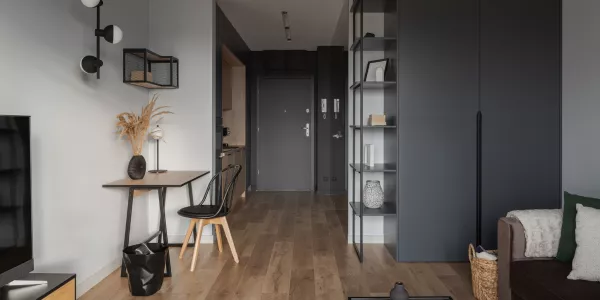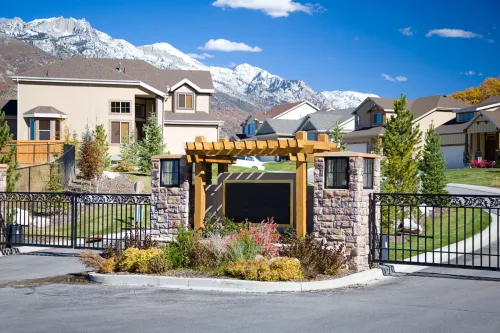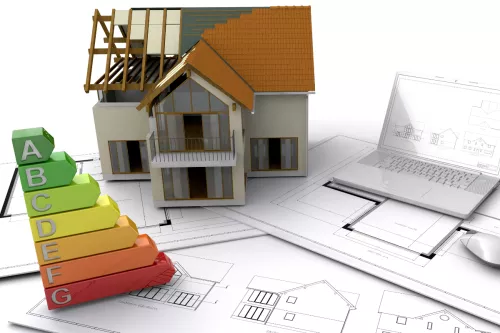In the heart of bustling urban landscapes where every square foot comes at a premium, the concept of micro-apartments has emerged as a beacon for city dwellers grappling with high rents. These compact living spaces, often no larger than a couple of hundred square feet, present an opportunity to embrace a minimalist lifestyle without breaking the bank.
Opting for a micro-apartment can be a strategic move for those looking to economize on rent while still enjoying the vibrancy of city life. However, the allure of a lower price tag comes with its own set of considerations, making it crucial to understand exactly what living in a micro-unit entails before signing on the dotted line.
This exploration delves into the nuances of micro-apartments, shedding light on their appeal, functionality, and the lifestyle adjustments they entail, ensuring you're well-informed about this modern approach to urban living.
What is a Micro Apartment?

A micro-apartment serves as a compact abode for a single resident, ingeniously designed to incorporate all the essentials of a standard studio apartment within a remarkably small area, typically between 200 to 400 square feet.
Imagine the spatial confines of a one-car garage expanding to that of a two-car garage to grasp the scale. Despite their limited size, these dwellings are cleverly crafted to optimize both the perception and functionality of their modest dimensions.
This is achieved through architectural features such as elevated ceilings and expansive windows that introduce a sense of spaciousness and light, alongside innovative furnishings like wall-mounted Murphy beds and collapsible tables that free up floor space when not in use.
These micro-units cleverly balance the essentials of daily living with a minimalist ethos, offering a cohesive blend of a kitchenette, bathroom, and a versatile living area that transitions into a bedroom, all within a footprint that champions efficiency and simplicity.
The Allure of Micro Living
Micro-apartments primarily attract millennials, who often find themselves edged out of the expensive rental markets in major urban centers, as well as older renters seeking to simplify their living situation. The compact nature of these apartments makes them less suitable for young families and couples, due to the constrained space that barely accommodates one individual, let alone more.
In fact, many of these units are designated for single occupancy, with property managers typically not leasing them to multiple occupants. The allure of micro-apartments lies in their prime urban locations, providing a cost-effective gateway to living in sought-after city centers.
Additionally, the appeal extends to those who value a lifestyle that emphasizes experiences and simplicity over the accumulation of material goods, fitting well with a minimalist and eco-conscious way of life.
Microlofts: A Step Above

Microlofts represent an intriguing evolution within the realm of compact urban living. These are essentially a stylish and slightly more spacious variant of the micro-apartment, typically found in refurbished industrial buildings or modern, purpose-built developments.
The defining characteristics of a microloft include higher ceilings and larger windows compared to standard micro-apartments, which work together to create a sense of openness and an influx of natural light, making these small spaces feel more expansive and airy.
One of the hallmark features of microlofts is the lofted sleeping area, which is often situated above the main living space. This architectural design effectively separates the sleeping quarters from the rest of the living area, thereby optimizing the usable floor space and adding a level of separation that is often lacking in single-level micro-apartments.
This clever use of vertical space not only maximizes functionality but also adds a dynamic aesthetic element to the unit. Microlofts appeal to a wide range of residents, from young professionals and artists to downsizers, all drawn by the blend of functionality, style, and location.
These units often retain elements of their industrial heritage, such as exposed brick walls or beams, which lend a unique character and charm that is highly valued in contemporary urban design.
The Health Perspective
The health implications of residing in confined spaces are complex. On one hand, such environments can compromise personal space, potentially leading to increased stress and anxiety, especially if one feels trapped or isolated.
The presence of clutter can exacerbate this, overwhelming both the physical and mental space and impeding the ability to concentrate. Noise and other disruptions can further distract and negatively affect mood. On the other hand, the urban setting of these small living areas often promotes outdoor activities and community involvement, offering a counterbalance to the constraints of indoor space.
Achieving a healthy lifestyle in these settings hinges on effective organization, engaging in regular outdoor activities, and personalizing the living area to meet individual needs and tastes, creating a sanctuary that reflects one's personal aesthetic.
Weighing the Pros and Cons
When considering a micro-apartment, it's essential to balance its advantages and drawbacks. On the upside, these compact living spaces often come with lower rental and utility costs, are less expensive to outfit, and offer communal amenities like gyms and pools, along with privacy and a smaller environmental footprint.
They're also typically easier to clean and located in sought-after urban areas. However, the affordability might not always stack up against local averages, and the limited space can pose challenges in terms of storage, living area, and accommodating pets or family. Additionally, the necessity for space-saving furniture might drive up initial furnishing costs, and the kitchen facilities could be limited or shared.
Creating the Illusion of Space
Despite their compact size, certain design elements can significantly enhance the spatial perception of micro-apartments. Look for features like high or vaulted ceilings that create a more open, airy environment, avoiding the feeling of being confined.
Large windows that allow ample natural light to flood in, especially if they're well-positioned to capture sunlight at the best times of the day, can also make a small space feel more expansive. The inclusion of an outdoor area, like a patio, extends the living space outdoors, seamlessly blending indoor and outdoor living.
Additionally, smart storage solutions, especially built-in vertical storage, help in maintaining a clutter-free environment by maximizing wall space, thus preserving valuable floor area.
People also ask
Can I entertain guests in a micro apartment?
Yes, but it requires creativity. Foldable or multi-functional furniture can create temporary dining or socializing spaces.
Are micro apartments only found in cities?
While most common in urban areas, the concept is spreading to suburban locations, catering to those seeking simplicity and affordability.
How do I store my belongings in such a small space?
Innovative storage solutions, like under-bed storage, wall-mounted shelves, and multi-use furniture, are key to maintaining a clutter-free micro apartment.
What is the difference between a micro-apartment and a studio apartment?
A micro-apartment and a studio apartment are both single-room living spaces featuring a combined living and sleeping area, along with a bathroom and a compact kitchen.
The key distinction lies in size and amenities; a micro-apartment is essentially a more compact iteration of a studio, often complemented by communal facilities like gyms, pools, rooftop terraces, and shared lounges, enhancing the living experience beyond the confines of the individual unit.

 Marcio Vasconcelos
Marcio Vasconcelos





